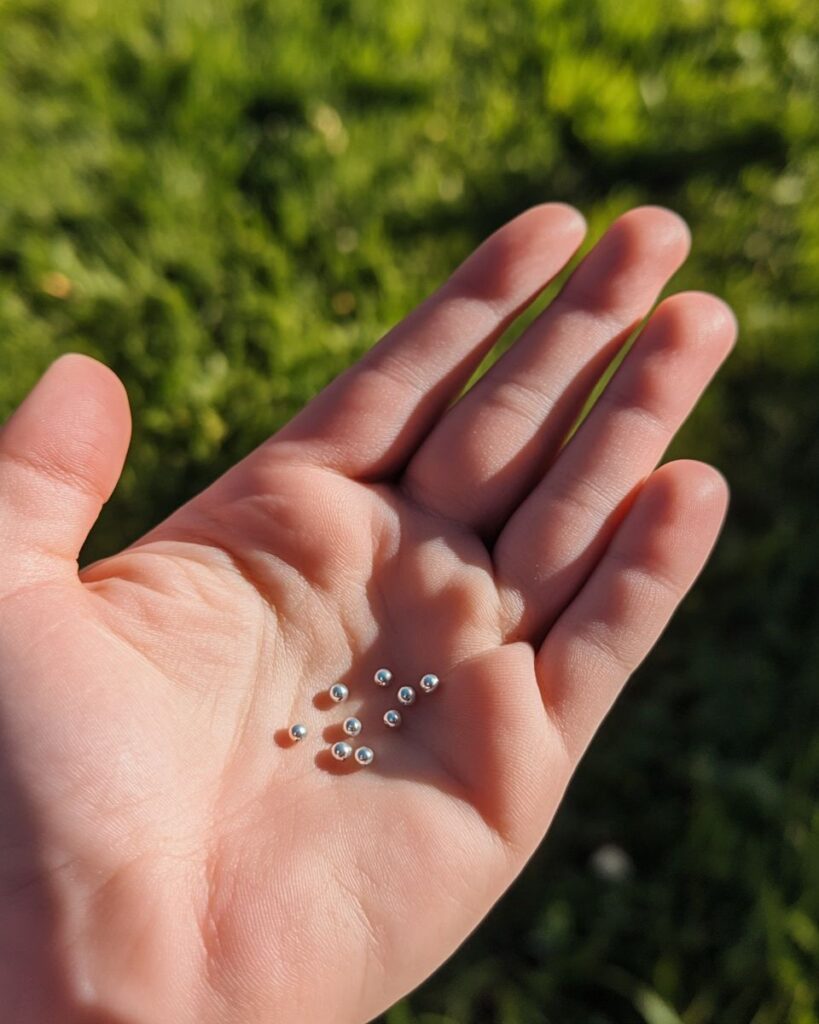Small balls appeared under my sink. The cabinet is below a sink with a disposal and dishwasher. Any idea what they are?
Holly Owens
Contributing Writer
Print this recipe
Discovering small, mostly round metal balls under your kitchen sink can be perplexing, especially when they appear seemingly out of nowhere. These mysterious objects, some of which are rusty, have sparked curiosity and concern. They don’t dissolve in water, indicating they are indeed metal. This article aims to unravel the mystery behind these metal balls, exploring their origins and providing insights into why they might have appeared in your kitchen cabinet.
Understanding the Kitchen Sink Setup
To solve the mystery, it’s crucial to understand the typical setup of a kitchen sink area. Most modern kitchens feature a sink with a garbage disposal and a dishwasher nearby. These appliances are interconnected through plumbing and electrical systems, which can sometimes lead to unexpected occurrences. The space under the sink is often cluttered with pipes, cleaning supplies, and sometimes, unnoticed objects.
Possible Sources of Metal Balls in the Kitchen
There are several potential sources for metal balls in a kitchen setting. They could be remnants from kitchen appliances, parts of plumbing fixtures, or even debris from construction or renovation work. Understanding the specific characteristics of these balls, such as their size, material, and condition, can help narrow down their origin.
The Role of Faucet Weights in Kitchen Plumbing
One plausible explanation for the presence of metal balls is their connection to kitchen faucet weights. Many pull-down kitchen faucets use weighted balls to retract the hose back into place after use. Over time, these weights can become dislodged or deteriorate, leading to pieces breaking off and ending up under the sink.
Identifying Rusty Metal Objects in the Kitchen
Rusty metal objects under the sink can be a sign of moisture exposure, which is common in kitchen environments. Identifying these objects involves examining their shape, size, and any markings that might indicate their original purpose. Rust can also provide clues about the age and material of the metal balls.
Why Metal Balls Appear Over Time
The gradual appearance of metal balls could be due to several factors, including wear and tear of kitchen fixtures, corrosion, or even unnoticed leaks. As components degrade, small parts can break off and accumulate in hidden areas, like under the sink.
Investigating the Connection to the Garbage Disposal
Garbage disposals are robust appliances, but they can also be a source of metal debris. If internal components become loose or damaged, small metal pieces could escape and find their way under the sink. Regular maintenance and inspection can help prevent such issues.
Exploring the Dishwasher’s Impact on Metal Objects
Dishwashers, while less likely to produce metal debris, can still contribute to the problem if parts become loose or corroded. The vibrations and water flow during operation can dislodge small metal components, which might end up under the sink.
Steps to Confirm the Identity of the Metal Balls
To confirm the identity of the metal balls, start by examining their size, weight, and material. Compare them to known components of your kitchen fixtures, such as faucet weights or disposal parts. Consulting the manuals of your appliances or seeking professional advice can also provide clarity.
Preventive Measures to Avoid Future Occurrences
Preventing future occurrences involves regular maintenance of kitchen appliances, checking for loose parts, and ensuring proper installation of fixtures. Keeping the area under the sink dry and organized can also help detect any unusual objects early on.
Conclusion: Solving the Mystery of the Metal Balls
By understanding the potential sources and reasons for the appearance of metal balls under your sink, you can address the issue effectively. Whether they are remnants of faucet weights or debris from other appliances, identifying and resolving the cause will help maintain a functional and safe kitchen environment.
Resources

